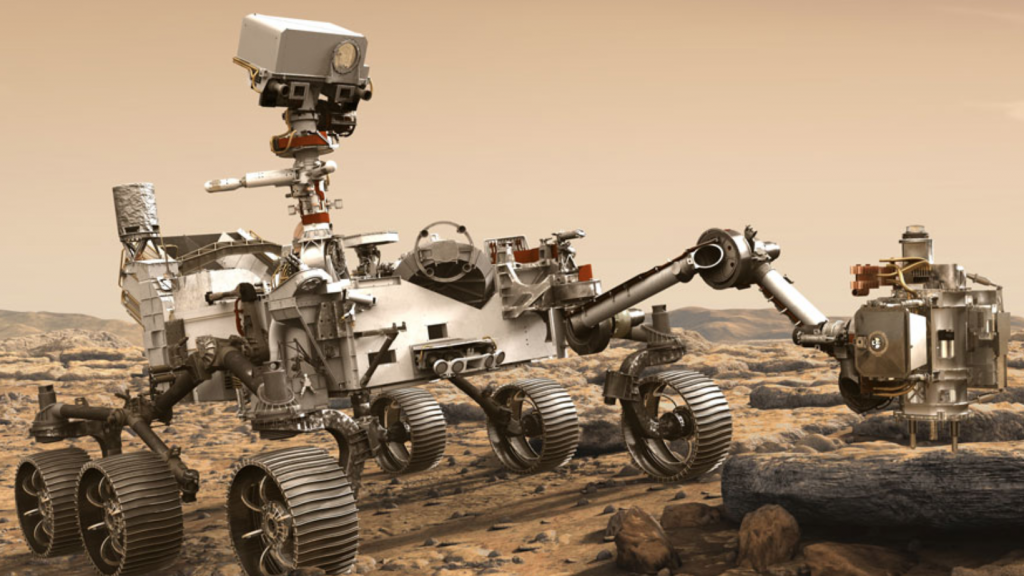
NASA’s Mars rover Perseverance landed with great fanfare for its mission to find signs of life. (Source: NASA)
Mars Rover Landing Signifies Major Advances in Exploration Tech
One of the most significant events involving high-level tech and AI in the past month occurred on Feb. 18 when NASA’s rover Perseverance landed on Mars successfully, more than eight years after Curiosity. Instead of landing in a “safe” area, the advanced navigation system tracked views of the rugged terrain and the landing was adjusted accordingly.
According to a story on GeekWire.com, the event showed how finely tuned the engineers at Aerojet Rocketdyne’s facility in Redmond, Wash., planned the spacecraft’s descent from 12,000 mph, deploying its parachute. A “sky crane” platform fired up eight Aerojet thrusters so it could hover 65 feet above the surface of Jezero Crater. The rover was lowered to the surface on the end of a set of cables, but when it touched down, the cables were cut and the platform blasted away from it and landed out of the way.
“The end of Perseverance’s seven-month, 300 million-mile journey played out like a radio drama. Due to limited bandwidth and an 11-minute delay in receiving signals, there was no live video of the landing. But thanks to internet links, millions of people could listen in as Mohan called out the milestones over a live stream from NASA’s Jet Propulsion Laboratory in Pasadena, Calif.
A socially distanced cadre of controllers at JPL applauded, screamed and exchanged fist bumps after the touchdown. Moments later, the first black-and-white picture from the rover’s hazard avoidance cameras was displayed on a giant screen.”
Similar in design to Curiosity, and weighing 1 ton, Perseverance was designed to drill out rock, collect it and store it for a return trip. The $2.7 billion mission is expected to prove whether Mars had life in the distant past, and perhaps whether anything living could exist under the Red Planet’s surface.
“Are we alone in this sort of vast cosmic desert, just flying through space, or is life much more common? … We don’t know the answers yet,” JPL’s Ken Williford, the mission’s deputy project scientist, said during a pre-landing briefing. “We’re really on the verge of being able to potentially answer these enormous questions.”
Perseverance can also operate a suite of scientific instruments to determine the chemical composition of its surroundings in great detail, including the first zoom camera ever sent to Mars. Future robotic probes sent from Earth will bring those samples back to Earth in the early 2030s for detailed lab studies.
Other never-before-deployed tech includes a mini-helicopter dubbed Ingenuity that will take a series of test flights during an early phase of the mission, becoming the first aerodynamic flying vehicle to soar over the surface of another planet.
Another experiment called MOXIE will test techniques for converting carbon dioxide in Mars’ atmosphere to oxygen. The technology could enable breathable air for future explorers and could even help to create rocket propellant.
read more at GeekWire.com







Leave A Comment